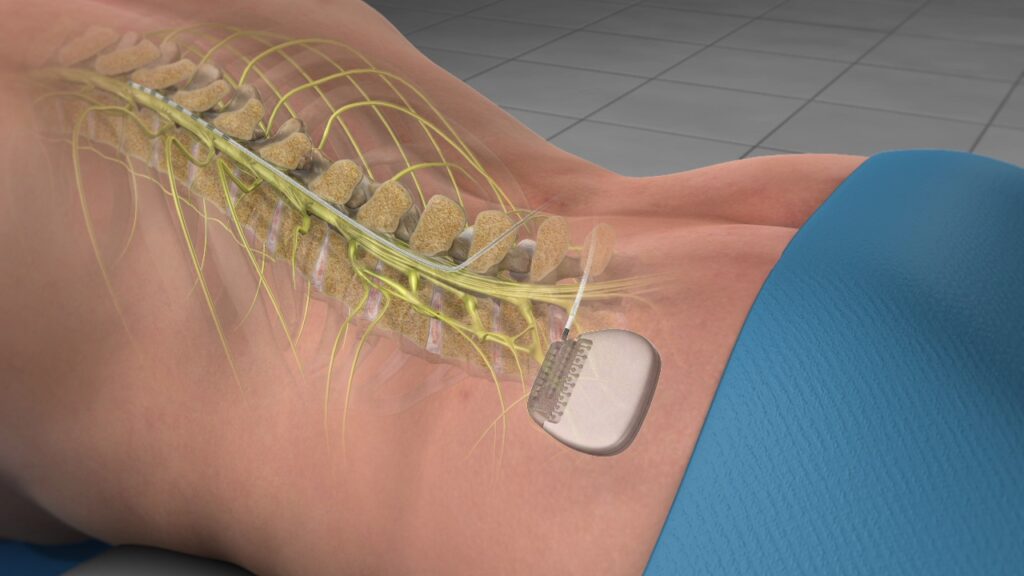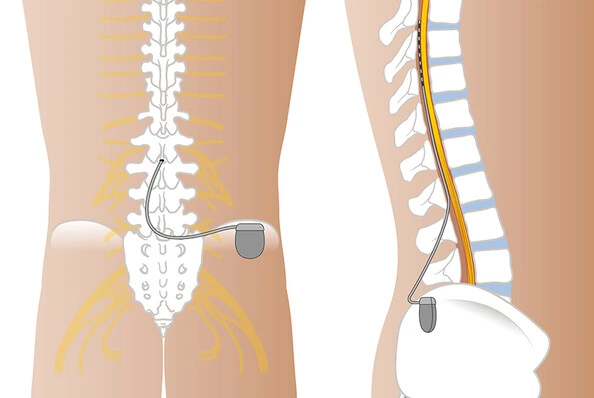Chronic pain affects every aspect of life, making daily activities challenging and often frustrating. For those who have tried multiple treatment options without relief, modern advancements in pain management may offer new possibilities. One such innovation is spinal cord stimulation (SCS), a therapy that is gaining attention for its ability to address certain types of chronic pain.
What Is Spinal Cord Stimulation?
Spinal cord stimulation involves the use of a small device, implanted near the spine, to deliver gentle electrical pulses to specific nerves. These pulses interfere with the way pain signals are transmitted to the brain, potentially reducing the sensation of pain. This technique does not eliminate the source of pain; rather, it modifies how the body perceives it.
Chronic pain can significantly impact daily life, making even simple tasks challenging.
For individuals who have not found relief through traditional treatments, spinal cord stimulation (SCS) offers a promising alternative. This therapy has gained attention for its effectiveness in managing various chronic pain conditions.
Understanding Spinal Cord Stimulation

Spinal cord stimulation involves implanting a device that delivers mild electrical pulses to the spinal cord. These pulses interfere with pain signal transmission to the brain, reducing pain perception. The system comprises a small pulse generator and thin wires (leads) placed near the spinal cord. Initially, patients undergo a trial phase with an external stimulator to assess effectiveness. If successful, a permanent device is implanted.
Mechanism of Action
The electrical pulses from the SCS device modulate nerve activity, altering how pain signals are perceived. Instead of feeling pain, patients may experience a tingling sensation known as paresthesia. This modulation helps in managing chronic pain by disrupting the transmission of pain signals to the brain.
Conditions Treated with SCS
Spinal cord stimulation is effective for various chronic pain conditions, including:
- Failed Back Surgery Syndrome (FBSS): Persistent pain after spinal surgery.
- Complex Regional Pain Syndrome (CRPS): A chronic pain condition affecting a limb after injury or surgery.
- Peripheral Neuropathy: Nerve damage causing pain, often in the hands and feet.
- Arachnoiditis: Inflammation of a membrane surrounding the spinal cord, leading to pain.
Benefits of Spinal Cord Stimulation

Patients may experience several benefits from SCS:
- Pain Reduction: Significant decrease in chronic pain levels.
- Decreased Medication Use: Potential reduction in reliance on pain medications.
- Improved Functionality: Enhanced ability to perform daily activities.
- Reversible Treatment: The implant can be adjusted or removed if necessary.
Potential Risks and Considerations
While SCS is generally safe, potential risks include:
- Infection: As with any surgical procedure.
- Lead Migration: Movement of the leads can affect stimulation.
- Device Malfunction: Technical issues may require additional procedures.
The Procedure: What to Expect
The SCS implantation process involves:
- Trial Phase: Temporary leads are placed to test effectiveness.
- Permanent Implantation: If the trial is successful, a permanent device is implanted.
Patient Selection Criteria
Ideal candidates for SCS are those who:
- Have chronic pain not managed by other treatments.
- Have undergone psychological evaluation to ensure suitability.
- Do not have contraindications such as untreated infections.
Advancements in SCS Technology
Recent developments in SCS include:
- High-Frequency Stimulation: Providing pain relief without paresthesia.
- Burst Stimulation: Mimicking natural nerve firing patterns for more effective pain relief.
Comparing SCS with Other Pain Management Options

| Treatment Option | Invasiveness | Effectiveness | Considerations |
|---|---|---|---|
| Medication | Non-invasive | Varies | Potential side effects and dependency |
| Physical Therapy | Non-invasive | Varies | Requires ongoing sessions |
| SCS | Minimally invasive | Effective for select patients | Surgical risks, device maintenance |
| Surgery | Invasive | Varies | Higher risk, longer recovery |
Conclusion
Spinal cord stimulation represents a significant advancement in chronic pain management, offering hope to those who have not found relief through traditional treatments. By altering pain signal transmission, SCS can improve quality of life for many patients. If you are considering SCS, consult with a pain management specialist to determine if this therapy is appropriate for your condition.
Summary
Spinal cord stimulation (SCS) is an innovative therapy for managing chronic pain. It delivers mild electrical pulses to the spinal cord, altering pain perception.
It is effective for conditions such as failed back surgery syndrome, complex regional pain syndrome, and peripheral neuropathy. Benefits include significant pain reduction, decreased medication use, and improved daily functioning. While generally safe, potential risks include infection and device-related issues.
Recent technological advancements have enhanced SCS efficacy and patient experience. Individuals suffering from chronic pain unresponsive to conventional treatments should consult with a specialist to explore the suitability of SCS for their condition.

